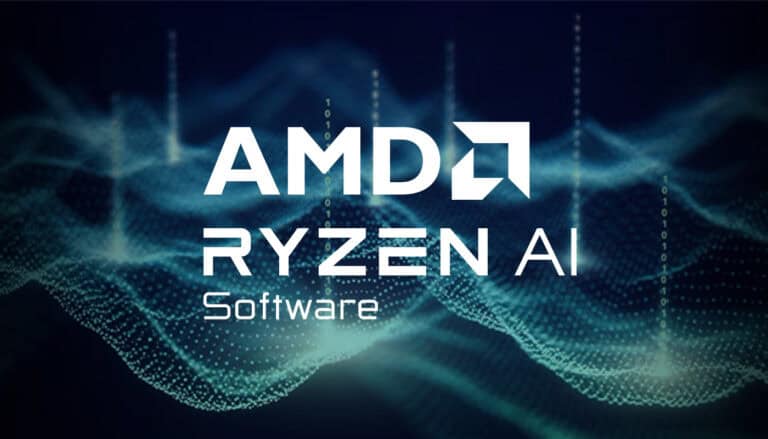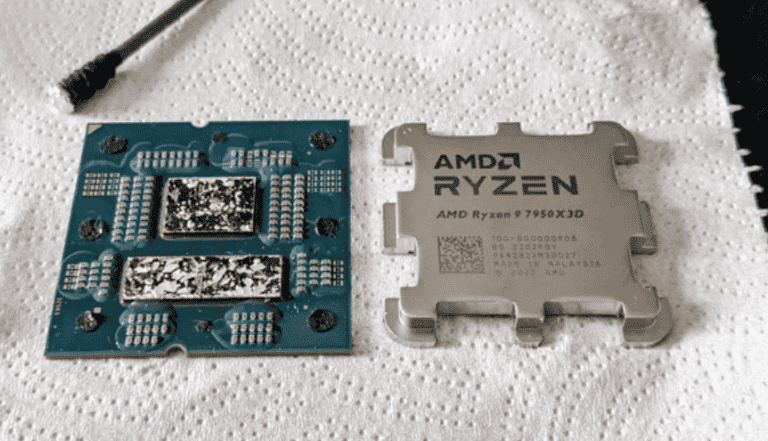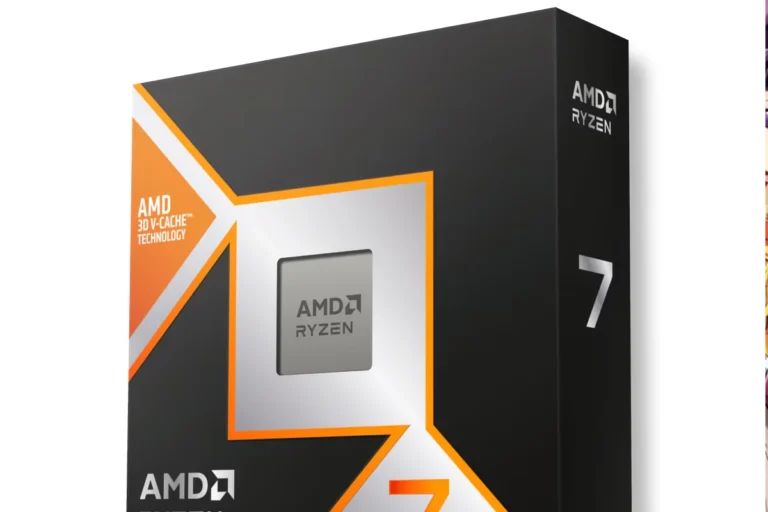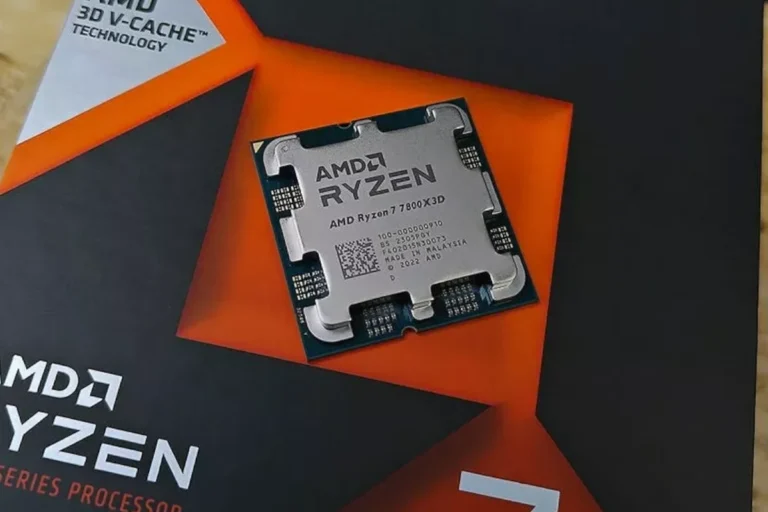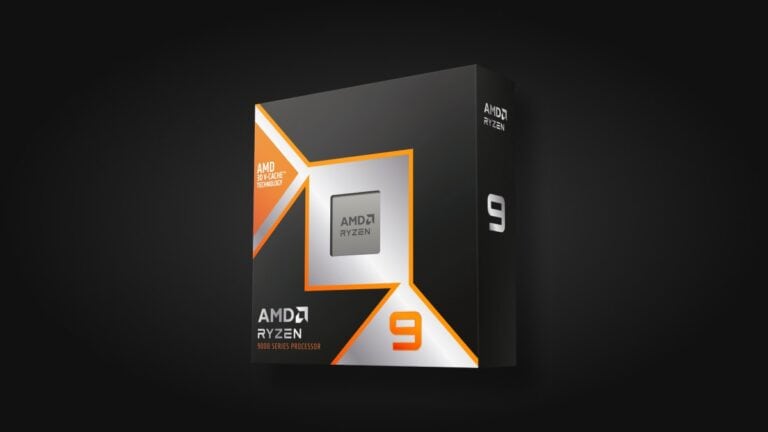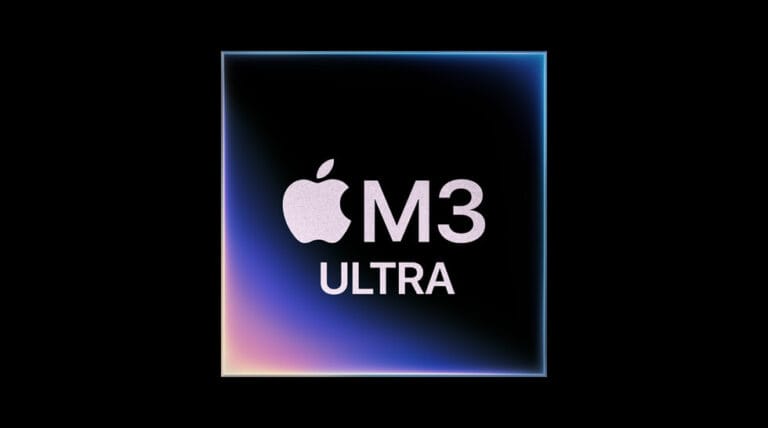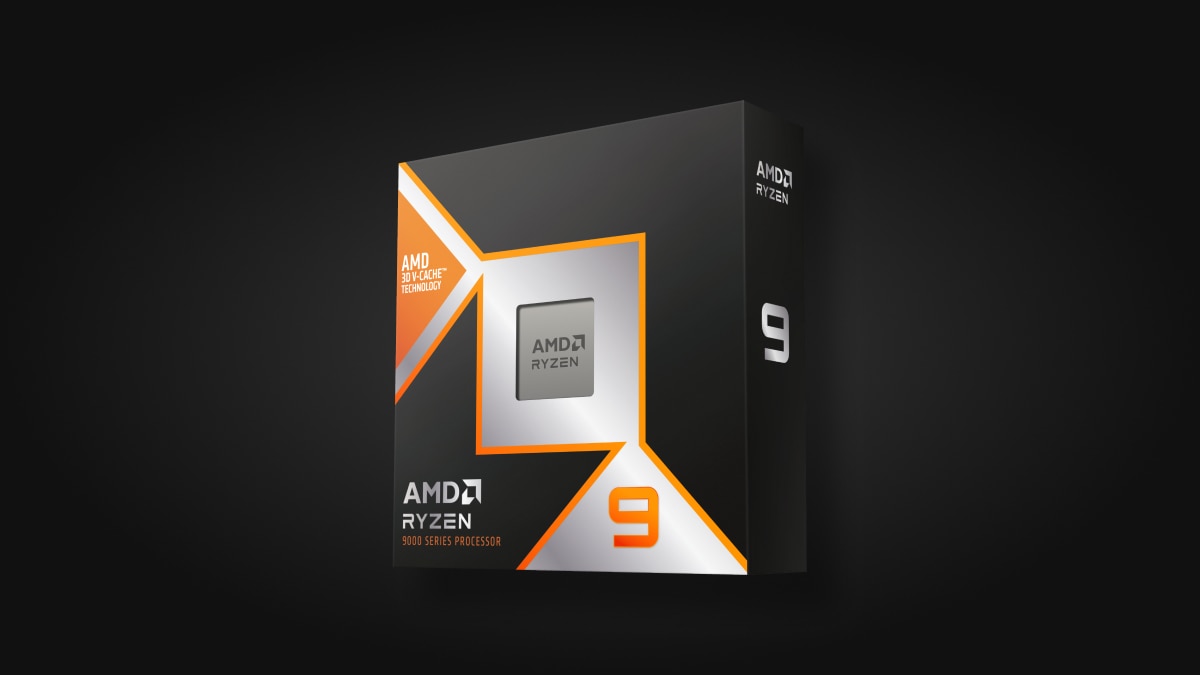
Gaming in 2025 demands serious firepower—and whether you’re chasing ultra-high frame rates or building a future-proof rig, the right CPU is key. This year, AMD and Intel are locked in a fierce battle, with AMD’s new Zen 5 chips setting the pace for performance while Intel pushes back with its Arrow Lake lineup. Here’s a breakdown of the best gaming CPUs currently on the market, including pricing, architecture, performance trends, and what each chip is best suited for.
🔥 Top 3 Gaming CPUs Right Now
1. AMD Ryzen 7 9800X3D – Best Overall Gaming CPU
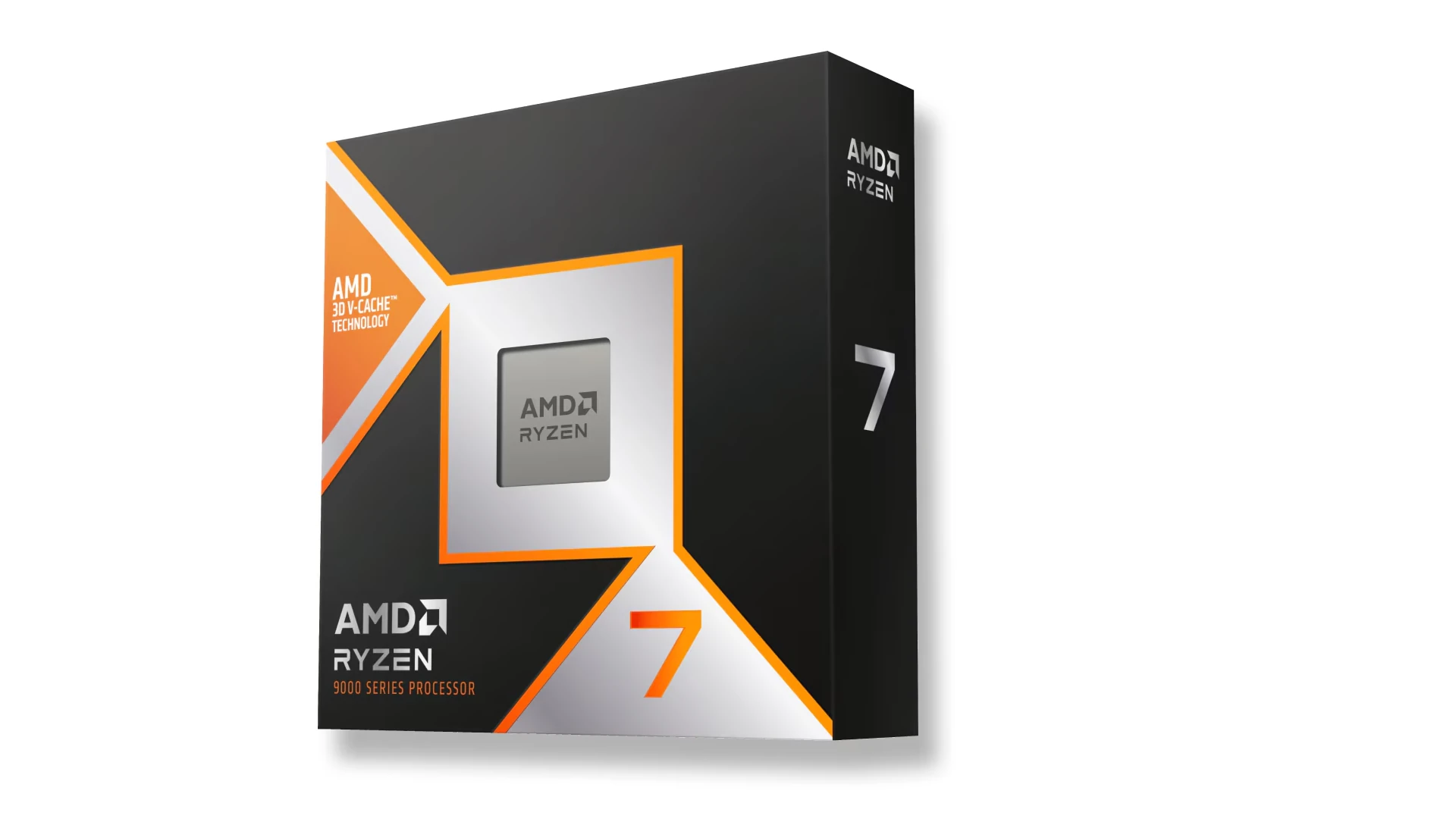
The Ryzen 7 9800X3D is dominating gaming benchmarks across the board. Thanks to AMD’s stacked 96MB 3D V-Cache, this chip delivers massive FPS gains—especially in 1080p and 1440p gaming. It’s roughly 35% faster in gaming than Intel’s Core Ultra 9 285K and around 15% faster than the previous-gen 7800X3D. With a base clock of 4.7GHz and boost up to 5.2GHz, it balances raw speed with incredible efficiency, all at a TDP of 120W. Best of all? It recently dropped below MSRP to around $472, making it a no-brainer for pure gaming builds.
2. AMD Ryzen 9 9950X3D – Best High-End Hybrid CPU
Packing 16 cores and 32 threads with the same Zen 5 architecture and 128MB of 3D V-Cache, the Ryzen 9 9950X3D is a beast—not just for gaming, but for streaming, video editing, and multitasking-heavy workflows. At $699, it’s not cheap, but it’s unmatched in terms of all-around capability. It’s ideal for gamers who also work in creative fields or want to pair the CPU with a top-tier GPU like the RTX 5090 for maximum headroom.
3. Intel Core Ultra 9 285K – Competitive, But Lagging
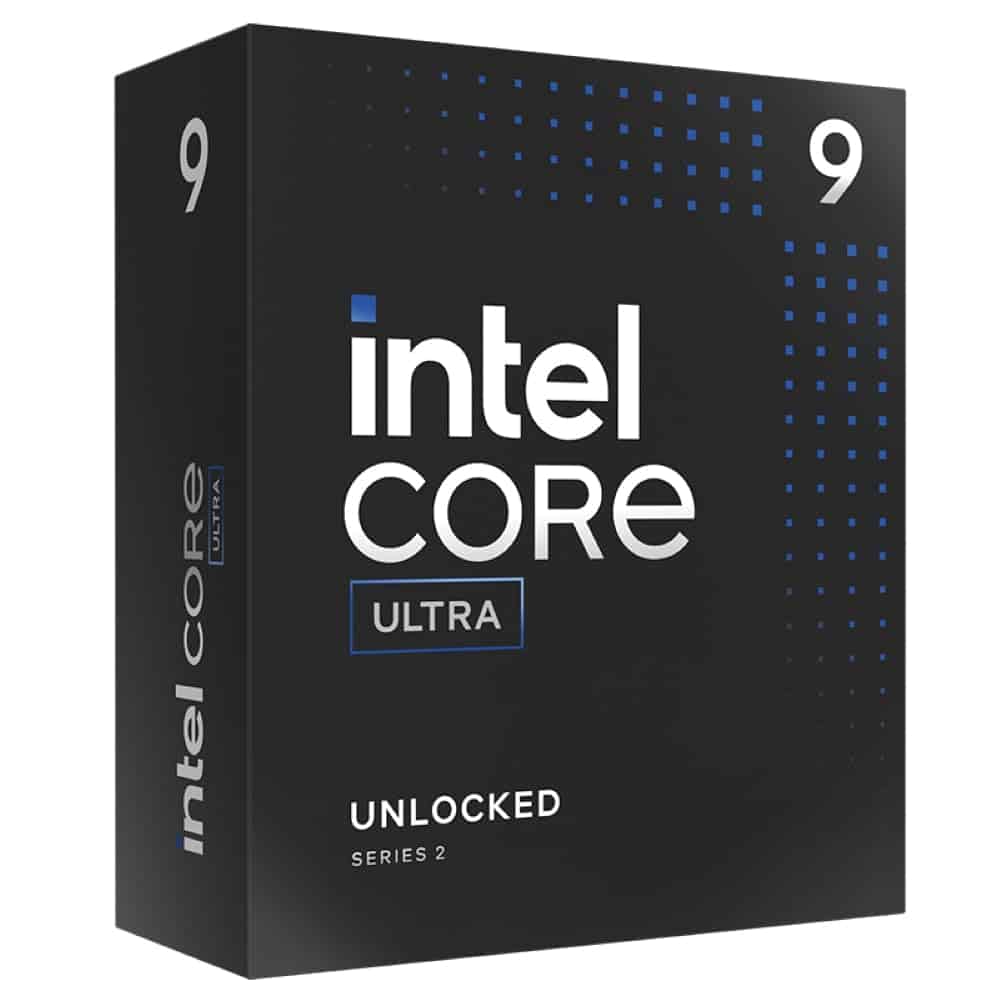
Intel’s Arrow Lake architecture introduces improved IPC and power efficiency, and the Core Ultra 9 285K does perform well with its 24-core layout (8 performance + 16 efficiency cores). But despite hitting up to 5.7GHz boost, its gaming performance still trails AMD’s top chips. It’s great for workloads like AI acceleration and multi-app environments thanks to Intel’s NPU, but it just can’t catch the 9800X3D in raw FPS performance.
Other Notable Contenders
- AMD Ryzen 5 9600X – Best budget Zen 5 chip at $178; 6 cores and 65W TDP make it ideal for mid-tier 1080p rigs.
- Intel Core i5-14600K – A great value pick for budget gaming (~$164), holding its own with solid single-core performance and 14-core hybrid design.
- AMD Ryzen 9 9900X3D – A new 12-core variant with 3D V-Cache aimed at gamers who want more than 8 cores without jumping to 16.
CPU Comparison Table – Gaming in 2025
| Rank | CPU | Cores/Threads | Base / Boost | Architecture | TDP | Price (USD) | Best For |
|---|---|---|---|---|---|---|---|
| 1 | AMD Ryzen 7 9800X3D | 8 / 16 | 4.7 / 5.2 GHz | Zen 5 + 3D V-Cache | 120W | $472 | Best FPS Gaming |
| 2 | AMD Ryzen 9 9950X3D | 16 / 32 | 4.3 / 5.7 GHz | Zen 5 + 3D V-Cache | 170W | $699 | Gaming + Content Creation |
| 3 | Intel Core Ultra 9 285K | 24 (8P + 16E) | 3.7 / 5.7 GHz | Arrow Lake | 125W | $567 | Hybrid Productivity |
| 4 | AMD Ryzen 5 9600X | 6 / 12 | 3.9 / 5.4 GHz | Zen 5 | 65W | $178 | Entry-Level Gaming |
| 5 | Intel Core i5-14600K | 14 (6P + 8E) | 3.5 / 5.3 GHz | Raptor Lake Refresh | 125W | $164 | Mid-Range Builds |
🔮 Looking Ahead: Panther Lake & Beyond
Intel’s next-generation Panther Lake desktop CPUs (Core Ultra Series 3) are expected in late 2025. Early whispers point to a massive architecture overhaul with better AI acceleration and DDR6 memory support. If you’re not in a rush to upgrade and want to see where Intel lands in this arms race, it may be worth waiting.
✅ Final Recommendation
If you’re building a high-end gaming PC today, the AMD Ryzen 7 9800X3D is your best bet for pure performance per dollar. If you’re balancing gaming and workstation needs, the Ryzen 9 9950X3D offers unparalleled versatility. On a tighter budget? Stick with the i5-14600K or Ryzen 5 9600X—both excellent mid-tier choices. And if you’re eyeing future-proof builds, keep an eye on Panther Lake later this year.
Best Processors on the Market
Choosing the right processor for your computer can feel overwhelming with so many options available. Today’s market offers powerful chips from both AMD and Intel, with various models designed for different needs and budgets. Whether you’re building a gaming PC, workstation, or everyday computer, understanding what’s available helps you make a smart choice.
The best processor for most users in 2025 is the AMD Ryzen 7 9800X3D, which dominates the gaming market while the Intel Core i5-13400F offers excellent value for budget-conscious buyers. These top CPUs represent the current state of processor technology, with manufacturers constantly pushing performance boundaries. Your ideal processor will depend on your specific needs, including gaming performance, productivity tasks, and how much you’re willing to spend.
1: AMD Ryzen 9 9800X3D
The Ryzen 7 9800X3D stands out as the fastest gaming chip on the market, outperforming even Intel’s more expensive offerings. This processor delivers exceptional frame rates that will transform your gaming experience.
You’ll appreciate the 9800X3D’s unlocked overclocking capabilities, giving you room to push performance even further. Unlike some high-performance CPUs, it doesn’t have excessive cooling requirements, making it easier to integrate into your system.
When comparing benchmark results, the 9800X3D performs impressively in games like Stellaris, where it sits at the top of performance charts. Your demanding games will run smoother with this processor handling the workload.
The 9800X3D is particularly notable for maintaining strong availability at MSRP pricing. This gives you access to premium performance without paying inflated prices that often accompany high-demand components.
For your gaming PC, this processor represents an excellent balance of performance and value. You’ll get top-tier gaming capabilities without the excessive price premium of some competing options.
2: Intel Core i9-14900K
The Intel Core i9-14900K is a powerhouse processor that offers impressive performance for gaming and heavy workloads. It features 36MB of cache and can reach speeds up to 6.00 GHz, making it one of Intel’s top offerings.
When it comes to raw power, the 14900K delivers, but it comes with some considerations. This CPU runs hot, with power consumption approaching 300W under heavy loads. You’ll want to invest in quality cooling if you’re considering this chip.
Many gamers consider the 14900K to be one of the best gaming processors currently available. It can push high-end graphics cards like the RTX 4090 to their limits, ensuring you get maximum frame rates in demanding games.
The 14900K is essentially a slightly boosted version of the previous 13900K, with minor clock speed improvements. However, this incremental upgrade maintains Intel’s competitive edge in the high-performance CPU market.
You should note that while this processor offers stellar performance, it tends to be more prone to thermal throttling than some competitors. Good system cooling isn’t optional—it’s essential for maintaining peak performance.
For those building a premium gaming rig or workstation, the 14900K provides the processing power you need. Though other options like AMD’s X3D series might offer better gaming performance in some scenarios, Intel’s flagship remains a strong contender.
3: AMD Ryzen 5 7600X
The AMD Ryzen 5 7600X is a solid mid-range processor worth considering for your gaming or productivity setup. This 6-core, 12-thread CPU offers a robust base clock speed of 4.7GHz, making it quite capable for most computing tasks you might throw at it.
For gamers, the 7600X delivers excellent performance, especially at 1440p resolution. You’ll find it handles modern titles with ease, though opinions on its value proposition are mixed among reviewers.
Price-wise, there have been some interesting developments. Recently, the 7600X has been available at significantly reduced prices, with some retailers offering it for basically $105 after various promotions and discounts.
When comparing models, you might want to consider the non-X version as well. According to user feedback, the 7600 non-X version performs nearly as well as the X variant in most applications.
Not everyone is completely sold on the 7600X though. PCMag notes that the processor is sometimes outperformed by lower-priced competition in certain benchmarks.
You’ll need to pair this CPU with an AM5 motherboard and DDR5 RAM, which represents a platform upgrade if you’re coming from older AMD systems. This investment gives you access to the latest features but does impact the total cost of your build.
4: Intel Core i5-13400F
The Intel Core i5-13400F offers impressive value for your gaming and productivity needs. This processor features 10 cores in total, with six Performance-cores and four Efficient-cores, giving you a total of 16 threads to work with.
At around $200, this CPU delivers excellent gaming performance without breaking the bank. You’ll find it’s a fine fit for a budget gaming PC, though it may not pair ideally with the highest-end graphics cards.
The 13400F represents a noticeable improvement over the previous 12400 model. You get more cores and better performance across both single and multi-threaded applications, which is great for multitasking.
For gaming enthusiasts on a budget, this processor deserves your attention. It delivers solid gaming performance at its price point, making it a smart choice for mid-range builds.
One thing to note is that the “F” in the name means this CPU lacks integrated graphics. You’ll need to pair it with a dedicated graphics card, which most gamers would do anyway.
The processor demonstrates good efficiency while handling gaming and work tasks. You’ll appreciate its reasonable threaded performance in productivity applications like video editing or coding projects.
Keep in mind that while powerful for its class, you shouldn’t expect it to compete with higher-end i7 or i9 processors in demanding professional workloads.
5: AMD Ryzen 7 9800X3D
The AMD Ryzen 7 9800X3D stands out as the best gaming CPU currently available on the market. This powerful processor features 8 cores and 16 threads, making it a top choice for serious gamers looking for peak performance.
What makes the 9800X3D special is its 3D V-Cache technology. This feature gives the processor extra cache memory that dramatically improves gaming performance by reducing memory access delays.
You’ll appreciate that the 9800X3D is now readily available at its MSRP after earlier supply issues. This accessibility makes it a more practical option for your high-end gaming build.
Benchmark tests show the 9800X3D is approximately 11.4% faster in gaming at 1080p than its predecessor, the 7800X3D. This performance boost comes with about 45% higher power consumption, something to consider when planning your cooling solution.
Unlike some high-performance processors, the 9800X3D doesn’t have excessive cooling requirements. It’s also unlocked for overclocking, giving you options to push its performance even further if desired.
When comparing options, the 9800X3D easily outperforms more expensive Intel alternatives. For your gaming rig, you’ll get better performance while potentially saving money compared to competing processors.
6: Intel Core i7-14700K
The Intel Core i7-14700K stands out as one of the best processor options available today. You’ll find impressive value with this CPU, as it delivers equivalent performance to the Core i9-13900K and Ryzen 9 7950X3D for nearly $200 less.
When you’re gaming, this processor won’t disappoint. It consistently delivers high frame rates while maintaining strong multithreaded performance for your other tasks. You get 97% of the flagship Core i9-14900K’s performance but at $90 less.
The 14700K represents a significant improvement in Intel’s “Raptor Lake” refresh lineup. What makes it particularly attractive is that these improvements come at no extra cost compared to previous generations.
You should consider this processor if you want balanced performance for both gaming and productivity. The extra cores make a noticeable difference in multitasking scenarios like streaming while gaming or running multiple applications.
For gamers who also need productivity power, this CPU hits the sweet spot. You won’t need to compromise on either front with the 14700K in your system.
Current pricing makes this an even more compelling option. You can find it for around $339.99 at major retailers, representing excellent value in the high-performance CPU market.
Evaluation Criteria for Processors
Choosing the right processor requires understanding several key technical specifications that determine performance. These specifications directly impact how well a CPU will handle your specific computing needs and whether it provides good value for your money.
Clock Speed and Cores
Clock speed (measured in GHz) tells you how many cycles a processor can complete per second. Higher clock speeds generally mean faster performance for single-threaded tasks like gaming. For example, a 5.0 GHz processor performs individual tasks faster than a 3.5 GHz processor.
The number of cores is equally important. Each core acts as an individual processor, allowing your computer to handle multiple tasks simultaneously. Modern processors typically offer:
- Entry-level: 4-6 cores
- Mid-range: 6-8 cores
- High-end: 8-16+ cores
Thread count also matters. Comparing CPUs with the same core count, the newer generation usually performs better. For general use, 6 cores and 12 threads provide excellent performance.
When shopping, don’t just look at the maximum clock speed. Consider the base clock speed too, as this represents the guaranteed minimum performance you’ll experience.
Thermal Design Power (TDP)
TDP measures how much heat a processor generates under typical workloads, expressed in watts. This specification is crucial for three reasons:
First, it directly impacts your cooling requirements. Higher TDP processors need more robust cooling solutions to prevent thermal throttling where performance is reduced due to heat.
Second, TDP affects power consumption. A processor with 125W TDP will draw more electricity than one with 65W TDP, potentially increasing your energy bills over time.
Third, TDP influences what motherboards and cases you can use. Small form factor builds may require lower TDP processors due to limited cooling options.
For most users, processors with 65W-95W TDP offer a good balance between performance and heat generation. Gaming and content creation might benefit from higher TDP options if you have adequate cooling.
Integrated Graphics Capabilities
Many modern processors include built-in graphics processing, eliminating the need for a separate graphics card for basic tasks. The quality of these integrated graphics varies significantly between models.
Intel’s latest integrated solutions (Iris Xe) and AMD’s Radeon Graphics can handle:
- Office work and web browsing
- Video streaming at 4K resolution
- Light gaming at lower settings
- Basic photo and video editing
If you plan to use your computer for serious gaming or professional creative work, you’ll still need a dedicated graphics card. However, capable integrated graphics can serve as a backup or allow you to build a more compact system.
When comparing options, look at the generation of integrated graphics. Newer generations typically offer better performance and support for modern graphics technologies. AMD’s processors often provide stronger integrated graphics performance than comparable Intel models.
Latest Innovations in Processor Technology
The processor market has seen remarkable advancements in recent years, with manufacturers focusing on two key areas that are reshaping computing capabilities. These innovations are making chips faster, more efficient, and increasingly specialized for modern computing demands.
AI and Machine Learning Integration
Today’s cutting-edge processors feature dedicated AI acceleration hardware. The AMD Ryzen AI 300 series launched in late 2024 marked a significant step forward, with even faster follow-ups now arriving on the market. These chips can handle complex AI tasks right on your device without sending data to the cloud.
Intel has also made significant strides with their AI-driven chips. Their Lunar Lake architecture and Gaudi AI accelerators demonstrate their commitment to integrated AI processing. This technology enables faster image processing, voice recognition, and predictive text features in your everyday applications.
The Ryzen 7 9800X3D stands out as the market’s fastest gaming chip, outperforming even Intel’s more expensive offerings. This performance boost comes partly from AMD’s advancements in embedding AI capabilities directly into their processor architecture.
Advanced Manufacturing Processes
Processor improvements aren’t just about design—they’re also about how chips are physically made. The latest CPUs use incredibly small 3nm and 4nm manufacturing processes, allowing billions more transistors in the same space compared to previous generations.
3D stacking technology has revolutionized chip design, with AMD’s 3D V-Cache being a prime example. The Ryzen 7 5800X3D demonstrates how this approach delivers exceptional gaming performance by stacking additional cache memory directly on the processor die.
Power efficiency has improved dramatically through better thermal design and improved power delivery systems. You’ll notice these chips run cooler and consume less electricity while delivering more performance, extending battery life in laptops and reducing energy costs in desktops.
Chiplet designs, where different processor components are manufactured separately and then combined, allow manufacturers to optimize each part of the CPU independently. This approach maximizes performance while keeping production costs and failure rates lower.
Frequently Asked Questions
Processors vary widely in performance metrics, capabilities, and ideal use cases depending on your specific needs. The latest models from Intel and AMD offer significant improvements in speed, efficiency, and specialized performance features.
What are the top-performing processors for high-end gaming PCs?
The AMD Ryzen 7 5800X3D stands out as one of the best gaming processors available today. Its 3D V-Cache technology delivers exceptional gaming performance at high frame rates.
For those seeking raw power, the AMD Ryzen 9 9800X3D takes gaming performance to another level with improved architecture and higher clock speeds.
The Intel Core i9-14900K remains a strong competitor for gaming enthusiasts who also need excellent multi-threaded performance for streaming or content creation alongside gaming.
Which processors provide the best efficiency for mobile devices?
Mobile processors focus on balancing performance with power consumption. AMD’s Ryzen 6000 and 7000 mobile series offer excellent efficiency for laptops and other portable devices.
Intel’s 13th and 14th generation mobile processors have made significant improvements in power efficiency while maintaining strong performance metrics.
Apple’s M-series chips represent the gold standard for efficiency in mobile computing, though they’re only available in Apple devices.
How do current laptop processors compare in terms of power and performance?
Today’s laptop processors approach desktop-level performance while managing thermal and power constraints. High-end gaming laptops often feature versions of desktop chips with slightly reduced power draw.
Ultrabook-focused processors like Intel’s P-series and AMD’s U-series prioritize battery life while still handling everyday tasks smoothly.
The gap between desktop and laptop performance continues to narrow with each generation, especially in premium devices with advanced cooling solutions.
What are the benchmarks for measuring processor performance in the latest models?
Cinebench tests multi-core and single-core performance, making it useful for comparing processors across different workloads and manufacturers.
Gaming benchmarks measure real-world frames per second in popular titles, where the Ryzen 5 7600X and higher models often excel.
Productivity benchmarks like PCMark measure performance in everyday tasks such as web browsing, document editing, and video conferencing.
Which processors lead the market in terms of speed and multitasking capabilities?
For multitasking and productivity, the Intel Core i7-13700K offers excellent all-round performance with strong multi-core capabilities.
AMD’s Threadripper series, particularly the Threadripper PRO 3995WX, dominates heavy workloads with its massive core count and threading capabilities.
For most users, the sweet spot remains in the mid-range with processors like the Intel Core i5-13400F providing excellent performance for everyday computing and moderate workloads.
What advancements in processor technology have been made for the latest generation computers?
3D stacking technology, exemplified in AMD’s X3D series, has revolutionized cache architecture to significantly improve gaming and application performance.
Hybrid core designs, like Intel’s combination of performance and efficiency cores, optimize workload distribution to enhance both speed and battery life.
Manufacturing improvements have allowed for smaller transistors, with both major manufacturers pushing toward 3nm processes for greater efficiency and performance per watt.

